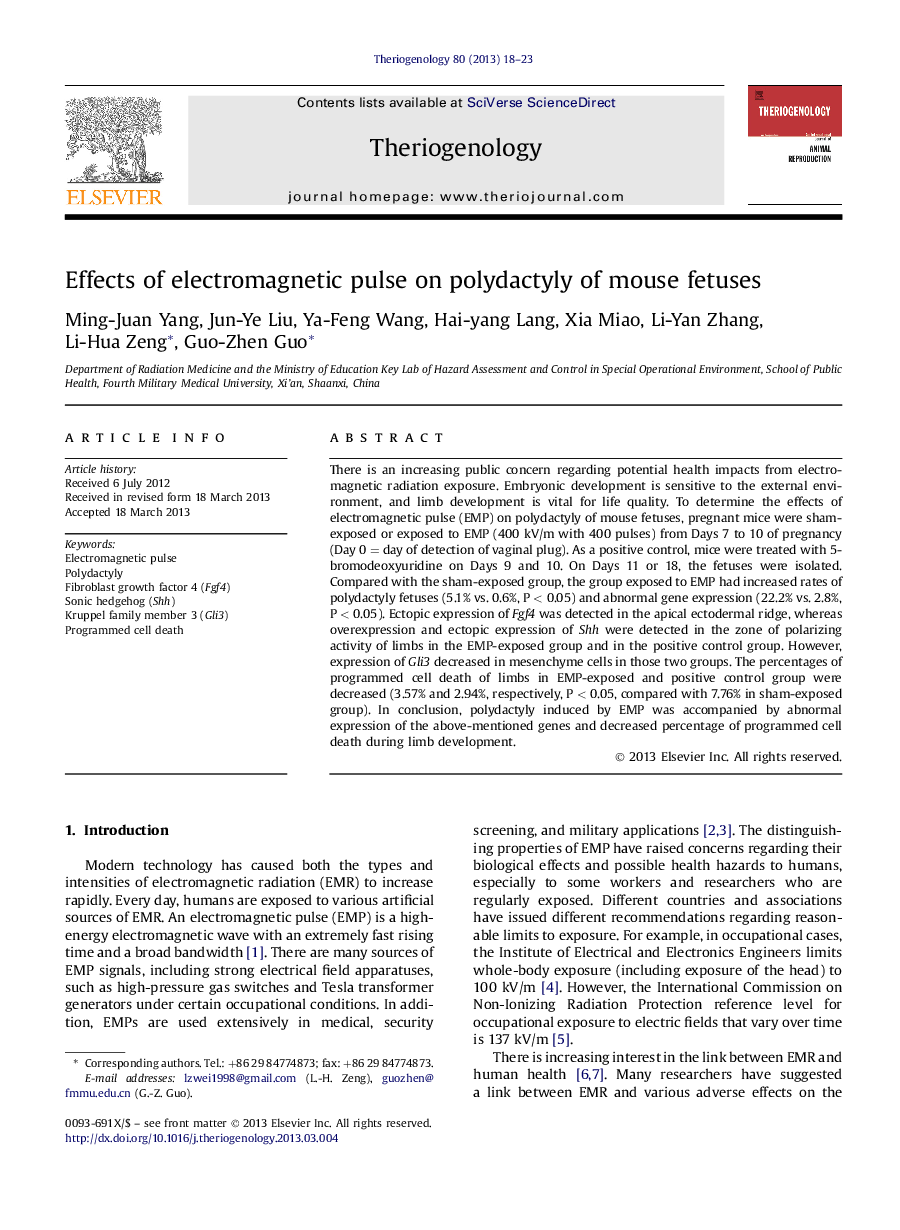| Article ID | Journal | Published Year | Pages | File Type |
|---|---|---|---|---|
| 10894453 | Theriogenology | 2013 | 6 Pages |
Abstract
There is an increasing public concern regarding potential health impacts from electromagnetic radiation exposure. Embryonic development is sensitive to the external environment, and limb development is vital for life quality. To determine the effects of electromagnetic pulse (EMP) on polydactyly of mouse fetuses, pregnant mice were sham-exposed or exposed to EMP (400 kV/m with 400 pulses) from Days 7 to 10 of pregnancy (Day 0 = day of detection of vaginal plug). As a positive control, mice were treated with 5-bromodeoxyuridine on Days 9 and 10. On Days 11 or 18, the fetuses were isolated. Compared with the sham-exposed group, the group exposed to EMP had increased rates of polydactyly fetuses (5.1% vs. 0.6%, P < 0.05) and abnormal gene expression (22.2% vs. 2.8%, P < 0.05). Ectopic expression of Fgf4 was detected in the apical ectodermal ridge, whereas overexpression and ectopic expression of Shh were detected in the zone of polarizing activity of limbs in the EMP-exposed group and in the positive control group. However, expression of Gli3 decreased in mesenchyme cells in those two groups. The percentages of programmed cell death of limbs in EMP-exposed and positive control group were decreased (3.57% and 2.94%, respectively, P < 0.05, compared with 7.76% in sham-exposed group). In conclusion, polydactyly induced by EMP was accompanied by abnormal expression of the above-mentioned genes and decreased percentage of programmed cell death during limb development.
Related Topics
Life Sciences
Agricultural and Biological Sciences
Animal Science and Zoology
Authors
Ming-Juan Yang, Jun-Ye Liu, Ya-Feng Wang, Hai-yang Lang, Xia Miao, Li-Yan Zhang, Li-Hua Zeng, Guo-Zhen Guo,
